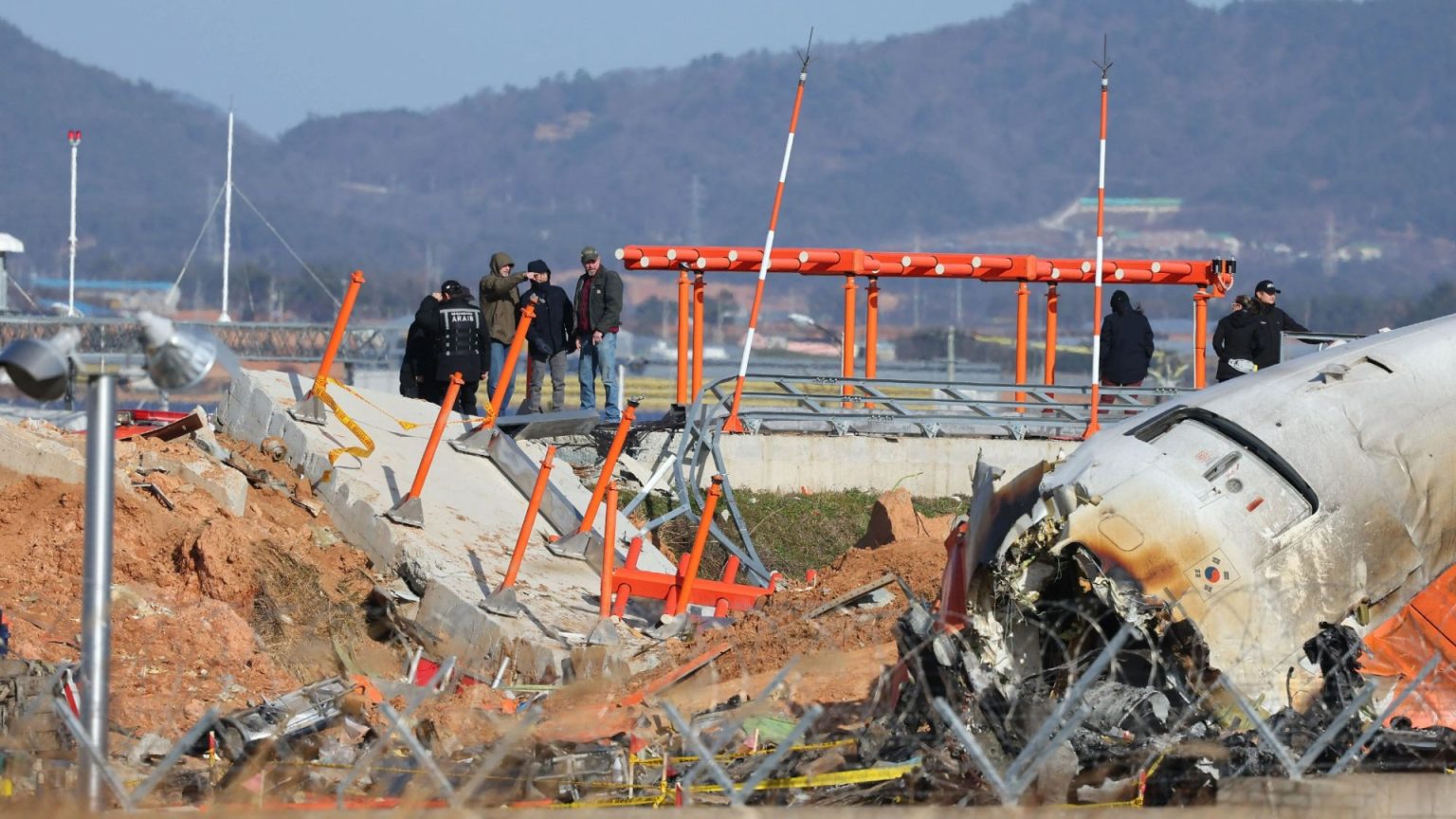The tragic crash of a Boeing 737-800 at Muan International Airport in South Korea, which resulted in the death of 179 people, has raised serious questions about the airport’s infrastructure and safety protocols. The aircraft, operated by Jeju Air, reportedly suffered a bird strike in one of its engines shortly before landing, leading to a failure of the landing gear deployment. The plane subsequently skidded off the runway and collided with a concrete wall supporting a navigational device, resulting in a catastrophic explosion. Disturbing footage of the impact shows the aircraft disintegrating upon impact, scattering debris and tragically, the remains of passengers across the airfield and a nearby field.
A veteran pilot with extensive experience at Muan International Airport expressed shock and disbelief upon learning of the wall’s composition. He, along with other pilots, had always assumed the mound encasing the navigation equipment was simply a pile of dirt, a perception seemingly reinforced by the lack of any explicit mention of the concrete structure in airport charts or guidance materials. This crucial omission raises concerns about the adequacy of information provided to pilots and the potential for similar hazards at other airports. The pilot’s testimony highlights a critical gap in communication that may have contributed to the disaster’s severity. Had the pilots been aware of the concrete wall, they might have undertaken different emergency procedures, potentially mitigating the catastrophic outcome.
The airport’s operating manual, uploaded earlier in the year, reportedly contained comments regarding the proximity of the embankment to the runway’s end and recommended a review of the equipment’s location during planned airport expansion. This revelation suggests a pre-existing awareness of potential risks associated with the wall’s placement, further intensifying scrutiny of the airport’s safety management. The failure to address this concern before the tragic incident underscores a critical lapse in safety oversight and raises questions about the prioritization of safety recommendations within the airport’s operational framework.
Aviation experts have weighed in on the incident, with some expressing bewilderment at the presence of a concrete structure in such a location. David Learmount of Flight International Magazine asserted that the concrete wall’s presence was a significant contributing factor to the high casualty count, suggesting that a more yielding structure, such as the metal structures typically used for such installations, might have resulted in a less devastating outcome. This expert opinion reinforces concerns about the airport’s deviation from standard practices and the potential consequences of such deviations for aircraft safety.
Furthermore, Captain Mike Vivien, an air safety and security consultant, questioned the necessity of such a robust structure, pointing out that while regulations may not have explicitly prohibited a concrete wall, its strength and potential to exacerbate impact damage should have been carefully considered. This perspective highlights the importance of not only adhering to minimum regulatory requirements but also proactively evaluating and mitigating potential risks beyond the scope of existing regulations. The presence of the concrete wall, while perhaps technically permissible, raises questions about the airport’s risk assessment process and its commitment to exceeding minimum safety standards.
The crash, now the deadliest in South Korean history, has prompted a thorough investigation to determine the precise sequence of events and identify contributing factors. While the initial reports focused on the bird strike and subsequent landing gear failure, the concrete wall’s role in the disaster’s magnitude has come under intense scrutiny. The investigation must address not only the immediate causes of the crash, but also the broader context of airport safety protocols, information dissemination, and adherence to best practices. This comprehensive approach is essential to prevent similar tragedies in the future and to ensure the highest possible level of safety for air travelers. The concrete wall, a seemingly innocuous element of airport infrastructure, has become a tragic symbol of the devastating consequences that can arise from overlooking potential hazards and failing to prioritize safety in all aspects of airport design and operation.
The initial narrative of a bird strike disabling the landing gear requires further investigation, as the precise mechanism by which this occurred remains unclear. The pilot’s mayday call just a minute after receiving a bird strike warning from the control tower, coupled with witness accounts of an explosion and smoke emanating from the engine, suggests a rapid escalation of events. The investigation will need to meticulously reconstruct the flight’s final moments, analyzing flight data, witness testimony, and the wreckage to determine the precise chain of events that led to the tragic outcome. This detailed analysis is crucial not only for understanding this specific incident but also for improving our understanding of the risks associated with bird strikes and developing more effective mitigation strategies.




